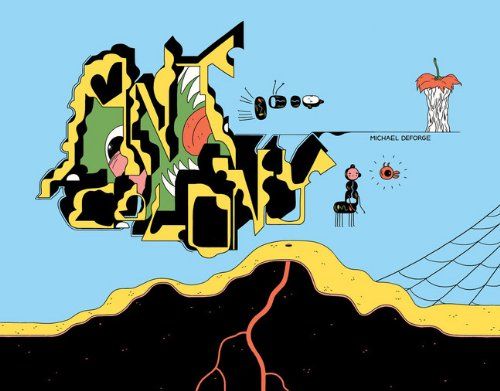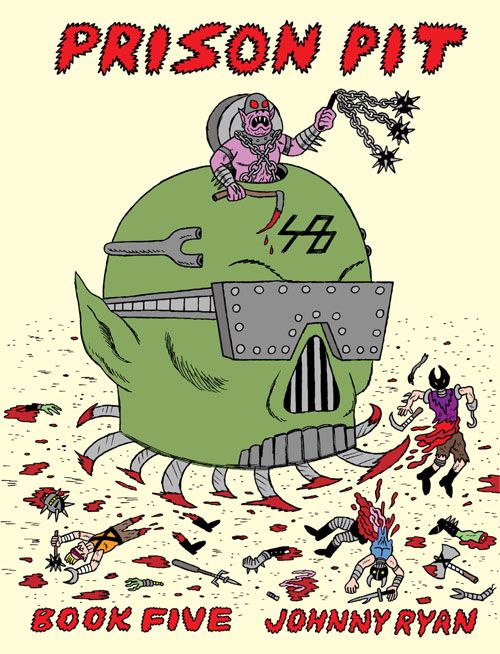Normally, when we talk about art – which, of course, is different from mere entertainment – we like to phrase it in rarefied terms. We tend to want our art to focus on the examination or discussion of high-minded ideals like truth, beauty, justice, wisdom, or the existence of a sentient spiritual being and subsequent afterlife. Stuff like that. We want our movies, music and books to be concerned with the ethereal world, and not so much with the physical one, especially unpleasant or embarrassing tasks like defecating or sexual congress. Being reminded that only a thin layer of skin holds in all those slimy organs, blood and other icky stuff keeps us from musing on what special snowflakes we all are (not to mention the horror of our own eventual death).
When we do acknowledge that stuff, it tends to be in the form of "low" comedy or horror films, where jokes about going to the bathroom, violence, lustful urges and other aspects of our daily physical lives that make us uncomfortable, can be digested more easily because we often exhibit it in as loud and gross a manner as possible.
But delving knee-deep into viscera and body fluids doesn't ipso facto mean you have to forego subtlety, nuance or poetry. Take Johnny Ryan's Prison Pit series for example.
OK, I admit it: At face value that last sentence seems pretty weird. Whether with his latest work or back in his Angry Youth Comics days, Ryan has never been an artist noted for its subtlety. And if Prison Pit is about anything, it's about aggression, a constant, in-your-face onslaught of blood and guts where every character is either a victim or a culprit (or both). There's no room for contemplation here. Just being polite or having a reasonable concern about something, is enough to get you karate chopped in half.
Yet despite all the gore, Ryan frequently is able to achieve a certain amount of sublime, horrible beauty, most notably in the way he transitions between scenes. That's especially true in the latest volume, Book 5, where a nefarious, multi-eyed slime monster slowly morphs over several pages into the eyes of our nefarious protagonist, C.F. Elsewhere, and two creatures fall into a seemingly bottomless pit. We watch them slowly grow smaller, panel by panel, until they disappear. Turning the page, we are faced with a stark, white, empty succession of panels that is only interrupted by the flying, bloodied limb. The sense of timing and minimalism at play here, particularly when balanced against the assault of violence that book end this sequence, suggest there's something more at play here than mere visceral thrills (though there's certainly plenty of that).
Because for all the blood, excrement and semen that flies around in Prison Pit, there's a genuine sense of horror at the proceedings, as though the comic were some sort of test, not for the reader (it's much too entertaining and smartly paced) but for Ryan himself, gazing into the abyss perhaps to see what exactly will make him flinch.
But if anger and fear are the driving emotions in Prison Pit, for Michael DeForge's Ant Colony, it's embarrassment and shame. Although entrails and fluids spill with just as much frequency (OK, maybe not quite as much frequency), DeForge's characters are far more inhibited and awkward than Ryan's.
As the title suggests, this is a book about ants, although DeForge's insects bear little real resemblance to the actual insects (except ostensibly for a warring tribe). Instead, DeForge draws them as odd, malformed lumps with color-coded organs on full display. The Queen looks like a Peter Max painting that's stood next to the oven for too long. Spiders look like wolf heads with wire-thin legs. Centipedes resemble long, black limousines. Some aspects of actual ant life are recognized, but really these are just tiny people, given to petty, erratic behavior and existential anxiety.
And there's a lot to be anxious about. Life in this dayglo, miniature world is savage and short and filled with brutal opportunities to meet your end, whether it's accidentally ingesting poisonous Sweet'N Low, being fried by a magnifying glass, getting decapitated by red ants or simply being eaten by a predator, there's little keeping this world from toppling into total destruction.
All of which DeForge lovingly displays for your perusal. His highly detailed panels are frequently overflowing with blood and various other fluids ("spider milk" plays a large role here, accentuating once again DeForge's interest in Cronenberg-esque hallucinogenics) that spill across the desert-like landscape with alarming regularity. Never mind taxes, death is the only surety in this universe.
Not that DeForge's characters are too concerned one way or the other to do something about it. With one notable exception, they're all caught up in their own neurosis, psychosis, past regrets, unrealistic dreams or desperate desires to worry about the wolf spider lurking only a few feet away. If Prison Pit gazes into the void screaming at full tilt, Ant Colony merely shrugs its shoulders and says "Eh, so what else is new?"
In the end, both Ryan and DeForge are able to get quite a bit of mileage out of material that could ostensibly be labeled as "gross-out." There's an artistry and legitimacy here that belies the notion that picking at scabs is an exercise in futility.
Prison Pit Book Five by Johnny Ryan, Fantagraphics Books, 120 pages, $19.99
Ant Colony by Michael DeForge, Drawn and Quarterly, 112 pages, $21.95.


